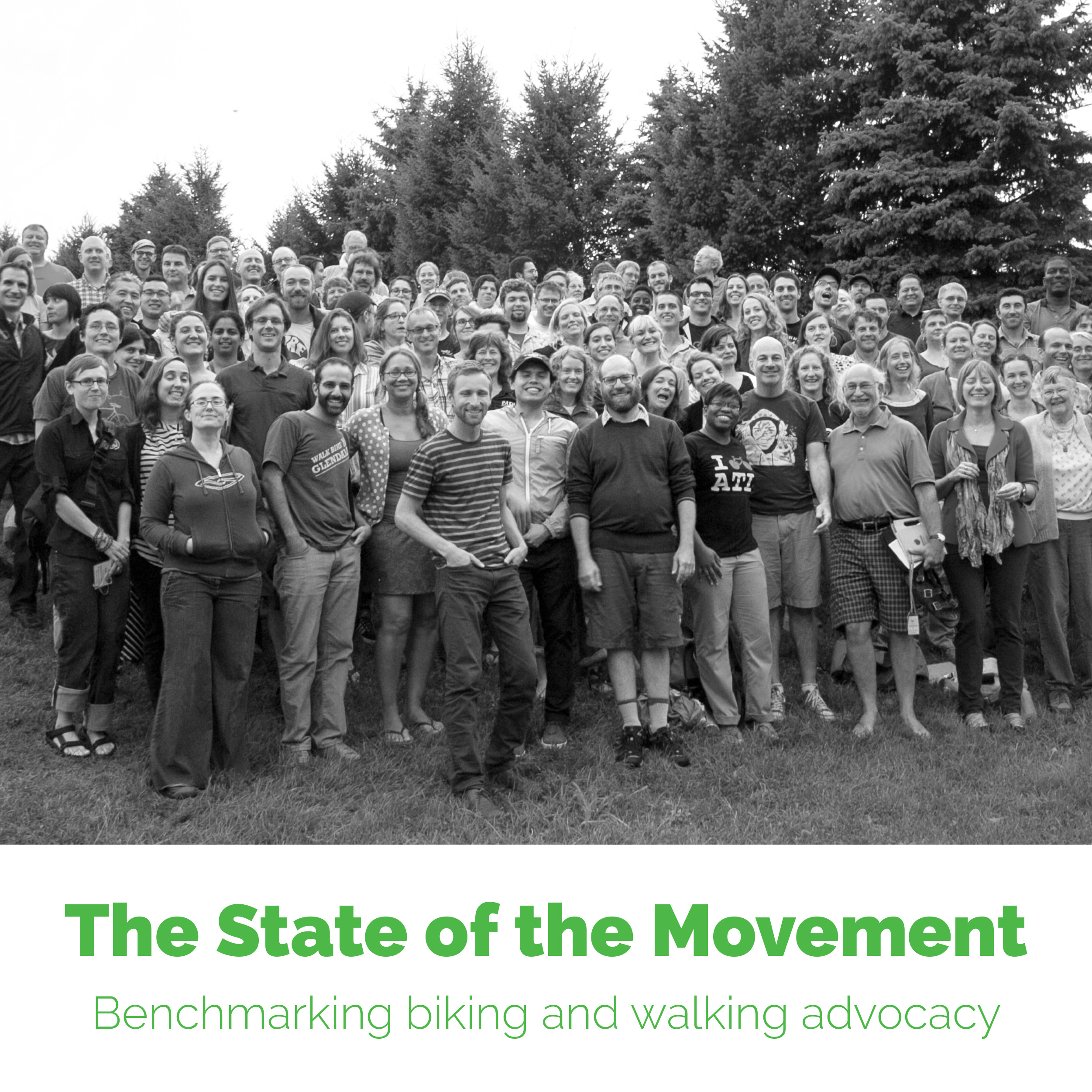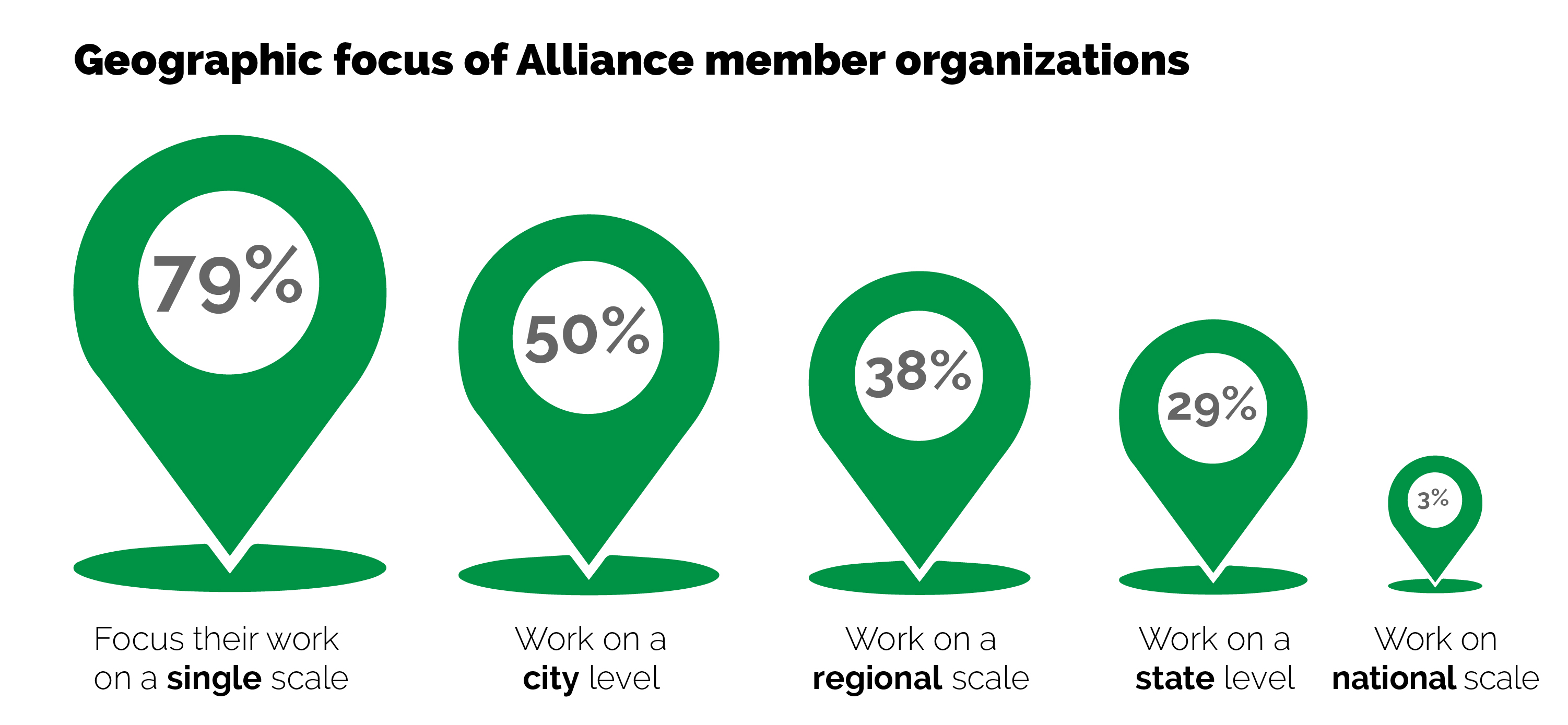 Last week, the Alliance released The State of the Movement, a first-of-its-kind report examining the trends and trajectory of bike/walk advocacy in North America.
Last week, the Alliance released The State of the Movement, a first-of-its-kind report examining the trends and trajectory of bike/walk advocacy in North America.
Over the coming days and weeks we're delving into the data and today we take a look at the types of organizations that are members of the Alliance — and scope of their work.
Looking at Alliance membership, the movement has seen tremendous growth over the past 20 years. When the Alliance was established in 1996, it had just 12 member organizations nationwide. Now more than 200 state and local groups across North America are members of the Alliance.
Of our 211 member organizations, the vast majority are non-profit organizations: 93% percent of Alliance members are 501(c)(3) organizations, 4% are 501(c)(4), and 2% percent are a combination.
In terms of their work, 97% are focused on bicycling in some way, with 32% solely focused on bicycles. Only 3% of member organizations work solely on walking issues. The most common combination of mission elements is bicycle and pedestrian (65%), with additions of health (12%), transit (9%) or both (7%) as the next most common.

Change happens at many different levels — from the neighborhood council to the U.S. Congress. The vast majority of Alliance members (79%) focus on bicycling and walking at a single scale.
Based on analysis of mission statements and major campaigns, half of our member organizations incorporate city-level issues, 38% work on a regional scale, and 29% include state/province-wide efforts. Only 3% of members approach bike/walk advocacy on a national scale.

Read the full report here and stay tuned to the blog for more!

